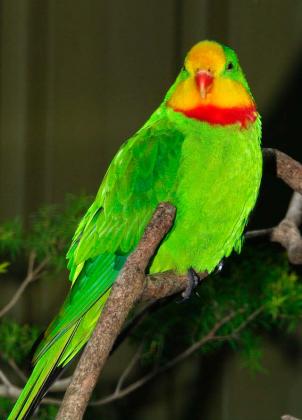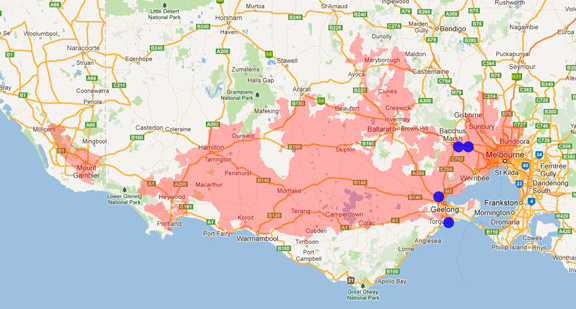A range of teacher professional learning programs will be developed to accompany the Biodiversity of the Western Volcanic Plains online outreach...


Superb Parrot
Polytelis swainsonii
Usually seen in family parties or small flocks. Roosts communally in trees. Nests in deep hollows or hollow limbs usually in River Red Gums. Breeds from September to December. Female lays 4-6 eggs for 20-21 days and is fed by the male during this time. Juveniles are later fed by both parents and leave the nest at 5 weeks.
| Details | Description |
| Type | Bird |
| Group | Parrot |
| Other Common Names | Barraband, Barraband Parakeet, Barraband Parrot, Scarlet-breasted Parrot |
| Identifying Characteristics | |
| Distinctive Markings | Males have a bright yellow forehead and cheeks with a scarlet band on the upper chest. Female is duller with blue-grey cheeks, red thighs and patches of pink on the undertail. |
| Diet | Omnivore. Feeds mainly on the ground. Eats seeds of grasses and other plants, fruits, berries, nectar, flowers and some insects. |
| Habitat | Timbered waterways and nearby well-watered woodlands. Found mainly in River Red Gums along the Murray and Murrumbidgee rivers. Also found in the mallee region as well as in native cypress forests and farmlands. |
| Native Status | Native to Australia |
| Sounds | Strong, penetrating, rather rough yet musical "querrieek, querrieek" with a final loud, sharp "eeK". Sharp, penetrating whistle "whiek, whiek, whiek'. Harsh, deep, scolding "quarrarrk". |
| Taxonomy | |
| Phylum | Chordata |
| Class | Aves |
| Order | Psittaciformes |
| Family | Psittacidae |
| Genus | Polytelis |
| Species | swainsonii |

Distribution maps indicate current and historic locations where species have been sighted.
Source: Atlas of Living Australia
| Conservation Status | |
| DEPI Advisory List | Endangered |
| FFG Act | Listed as threatened |
| EPBC Act | Vulnerable |
| FFG Action Statement |
The conservation status of species is listed within Victoria and Australia.
The Department of Environment and Primary Industry (DEPI) Advisory List consists of non-statutory advisory lists of rare or threatened flora and fauna within Victoria.
The Flora and Fauna Guarantee Act 1988 (FFG Act) lists threatened species in Victoria. Under the Act, an Action Statement is produced for each listed species.
The Environment Protection and Biodiversity Conservation Act 1999 (EPBC Act) is the Australian Government’s key piece of environmental legislation, listing nationally threatened native species and ecological communities.



